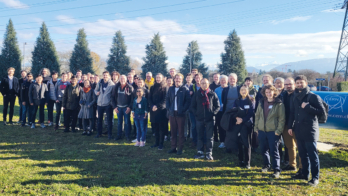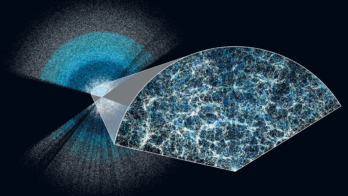
Within astronomy and cosmology, the idea that the universe is continuously expanding is a cornerstone of the standard cosmological model. For example, when measuring the distance of astronomical objects one often uses their redshift, which is induced by their velocity with respect to us due to the expansion. The expansion itself has, however, never been directly measured, i.e. no measurement exists that shows the increasing redshift with time of a single object. Although not far beyond the current capabilities of astrophysics, such a measurement is unlikely to be performed soon. Rather, evidence for it is based on correlations within populations of astrophysical objects. However, not all studies agree with this standard assumption.
One population study that supports the standard model concerns type 1A supernovae, specifically the observed correlation between their duration and distance. Such a correlation is predicted to be the result of time dilation induced by the higher velocity of more distant objects. Supporting this picture, gamma-ray bursts occurring at larger distances appear to, on average, last longer than those that occur nearby. However, similar studies of quasars thus far did not show any dependence of the length in their variability with their distance, thereby contradicting special relativity and leading to an array of alternative hypotheses.
Detailed studies
Quasars are active galaxies containing a supermassive blackhole surrounded by a relativistic accretion disk. Due to their brightness they can be observed with redshifts up to about z = 8, which, based on special relativity should show variabilities occurring √8 times slower than those that occur nearby. As previous studies did not observe such time dilation, alternative theories proposed included those that cast doubt on the extragalactic nature of quasars. A new, detailed study now removes the need for such theories.
These results do not provide hints of new physics but rather resolve one of the main problems with the standard cosmological model
In order to observe time dilation one requires a standard clock. Supernovae are ideal for this purpose because these explosions are all nearly identical, allowing their duration to be used to measure time dilation. For quasars the issue is more complicated as the variability of their brightness appears almost random. However, the variability can be modelled using a so-called dampened random walk (DRW), a random process combined with an exponential dampening component. This complex model does not allow the brightness of a quasar to be predicted, but contains a characteristic timescale in the exponent that should correlate to the redshift due to time dilation.
This idea has now been tested by Geraint Lewis and Brenden Brewer of the universities of Sydney and Auckland, respectively. The pair studied 190 quasars with redshifts up to z = 4, observed over a 20 year period by the Sloan Digital Sky Survey and PanSTARRS-1, and applied a Bayesian analysis to look for a correlation between the DRW parameters and their redshift. The data was found to match best a universe where the DRW parameters scale according to (1 + z)n with n = 1.28 ± 0.29, thereby making it compatible with n = 1, the value expected by standard physics. This contradicts previous measurements, something the authors attribute to the smaller quasar sample used in previous studies. The complex nature of quasars and the large variability in their population requires long observations of a similar population to make the time dilation effect visible.
These new results, which were made possible due to the large amounts of data becoming available from large observatories, do not provide hints of new physics but rather resolve one of the main problems with the standard cosmological model.
Further reading
G Lewis and B Brewer 2023 Nat. Astron. (in press).
O Chashchina and Z Silagadze 2015 Universe 1 307.





